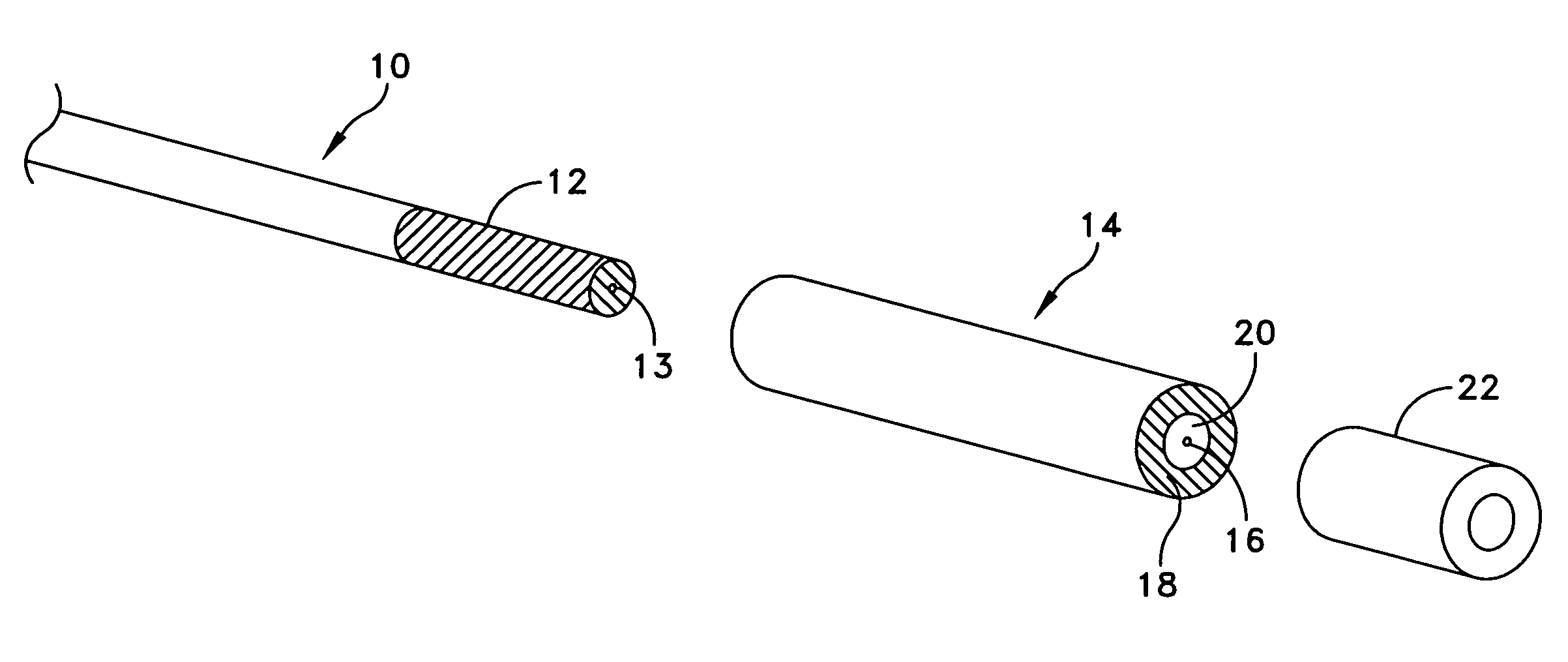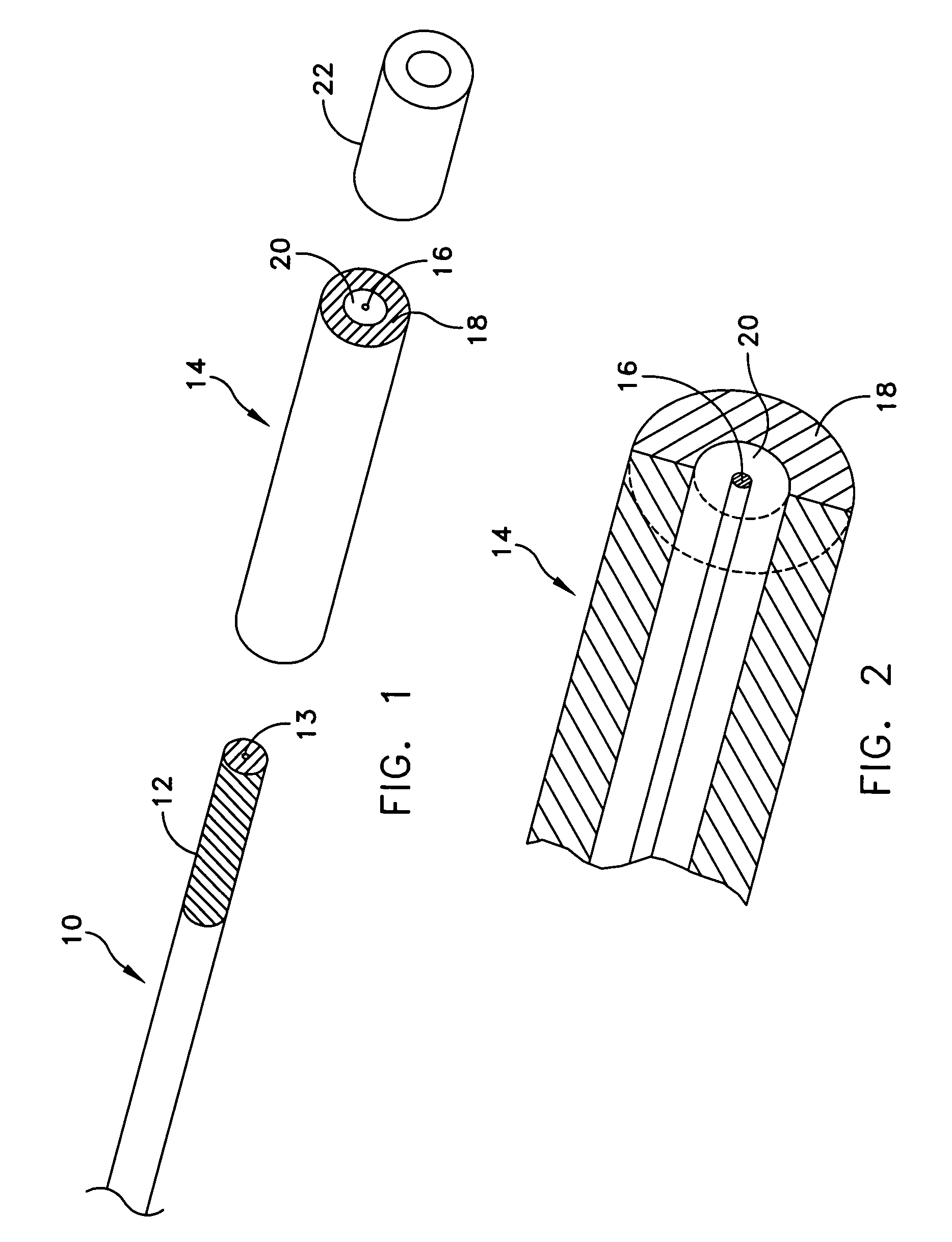Wideband floating wire antenna using a double negative meta-material
a floating wire antenna and double negative technology, applied in the field of underwater vehicle communication, can solve the problems of limited performance and prior art antennas suffering from limited performance in the commercial high frequency (hf) band of 2 to 30 mhz, and achieve the effect of improving performance in the commercial hf band
- Summary
- Abstract
- Description
- Claims
- Application Information
AI Technical Summary
Benefits of technology
Problems solved by technology
Method used
Image
Examples
Embodiment Construction
[0013]Referring to FIG. 1, there is illustrated an exploded view of the present invention. Using the geometry of prior art buoyant cable antennas as a point of departure there is illustrated a coaxial feed line 10. The coaxial feed line 10 is a standard 50 ohm transmission line, however, the invention is not limited to use with a 50 ohm transmission lines. At the end of the coaxial feed line 10 the braid 12 is exposed for 3 to 4 inches. This is necessary in order to ground the feed system for the antenna. At the end of the section of exposed braid 12 the center conductor 13 of coaxial feed line 10 is connected to the antenna element 14. The antenna element 14 is designed to be positively buoyant and to float on the surface of a body of water. The antenna element 14 consist of a straight wire 16, usually a copper (or other metal) conductor of uniform diameter along its length. The straight wire 16 may be either a solid or stranded copper conductor. The antenna element 14 has a cylind...
PUM
 Login to View More
Login to View More Abstract
Description
Claims
Application Information
 Login to View More
Login to View More - R&D
- Intellectual Property
- Life Sciences
- Materials
- Tech Scout
- Unparalleled Data Quality
- Higher Quality Content
- 60% Fewer Hallucinations
Browse by: Latest US Patents, China's latest patents, Technical Efficacy Thesaurus, Application Domain, Technology Topic, Popular Technical Reports.
© 2025 PatSnap. All rights reserved.Legal|Privacy policy|Modern Slavery Act Transparency Statement|Sitemap|About US| Contact US: help@patsnap.com



